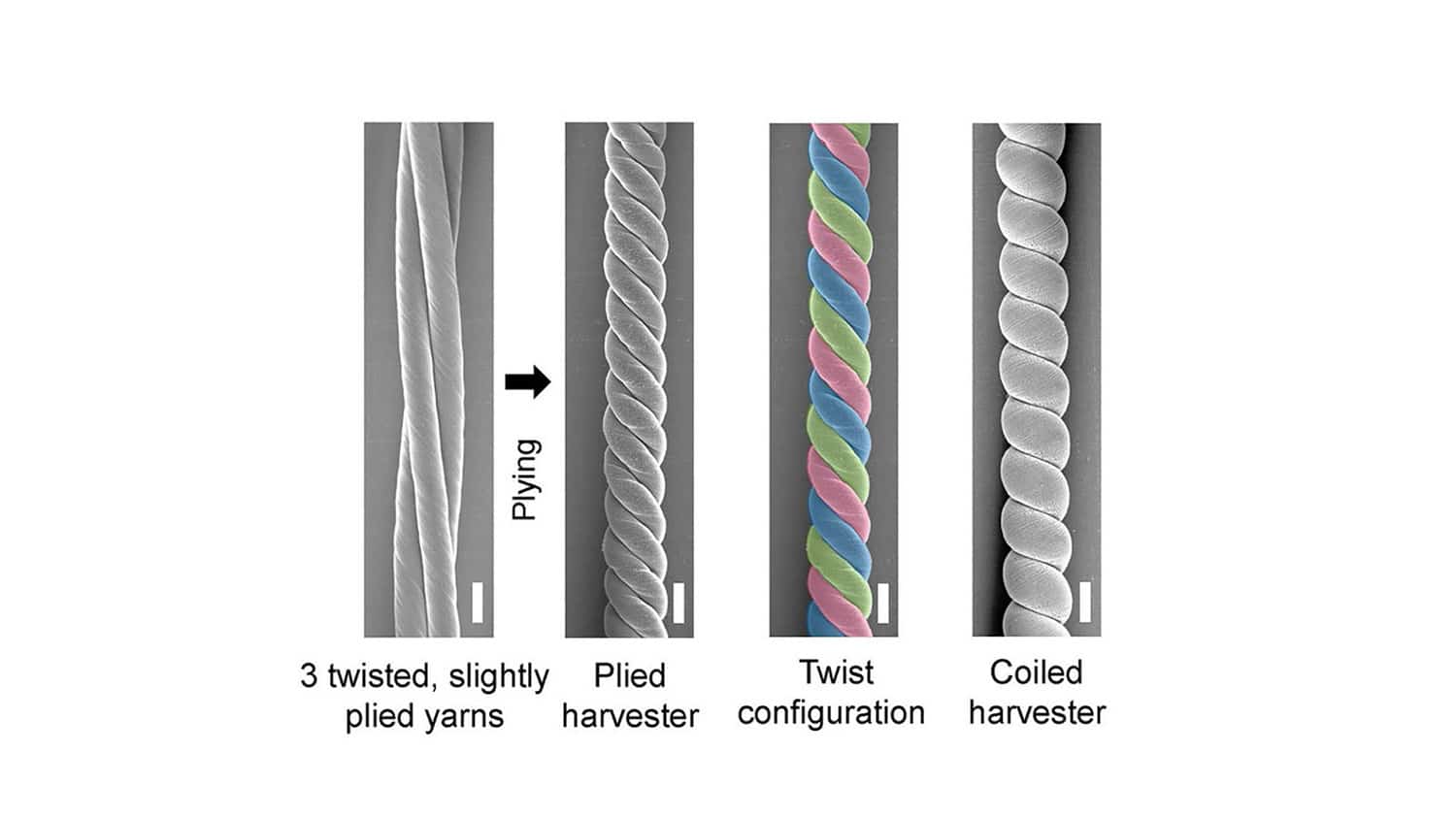
Energy harvesting becomes increasingly important because it offers an alternative power supply for electronic devices where it does not exist conventional energy sources. For harvesting mechanical energy, improved methods are needed.
Now, nanotechnology researchers at the University of Texas at Dallas and their collaborators have made novel carbon nanotube yarns that convert mechanical movement into electricity more effectively than other material-based energy harvesters. Their new version of high-tech yarns, called “twistrons,” is constructed much like traditional wool or cotton yarns and generates electricity when stretched or twisted.
Previously, researchers described that twistrons are constructed from carbon nanotubes (CNTs), which are hollow cylinders of carbon 10,000 times smaller in diameter than human hair. To make twistrons, the nanotubes are twist-spun into high-strength, lightweight fibers or yarns, into which electrolytes can also be incorporated. Also, to make the yarns highly elastic, the researchers introduced so much twist that the yarns coiled like an overtwisted rubber band.
In the new study, instead of twisting the fibers to the point of coiling, the researchers intertwined three individual strands of spun carbon nanotube fibers to make a single yarn, similar to the way conventional yarns used in textiles are constructed – but with a different twist.
“Plied yarns used in textiles typically are made with individual strands that are twisted in one direction and then plied together in the opposite direction to make the final yarn. This heterochiral construction provides stability against untwisting,” said Dr. Ray Baughman, the corresponding author of the study.
“In contrast, our highest-performance carbon-nanotube-plied twistrons have the same handedness of twist and plying – they are homochiral rather than heterochiral,” said Baughman.
In experiments with plied twistrons, researchers demonstrated an energy conversion efficiency of 17.4% for tensile (stretching) energy harvesting and 22.4% for torsional (twisting) energy harvesting. The previous coiled twistrons reached a peak energy conversion efficiency of 7.6% for both tensile and torsional energy harvesting.
“These twistrons have a higher power output per harvester weight over a wide frequency range – between 2 hertz and 120 hertz – than previously reported for any non-twistron, material-based mechanical energy harvester,” Baughman said.
The improved performance of the plied twistrons is a result of lateral compression of the yarn upon stretching or twisting, which brings the plies in contact with one another in a way that affects the electrical properties of the yarn.
“Our materials do something very unusual,” Baughman said. “When you stretch them, instead of becoming less dense, they become denser. This densification pushes the carbon nanotubes closer together and contributes to their energy-harvesting ability. We have a large team of theorists and experimentalists trying to understand more completely why we get such good results.”
In several proof-of-concept experiments, the researchers found that constructing the yarn from three plies provided optimal performance. They found that Twistrons sewn into textiles could sense and harvest human motion. Also, it could harvest energy from the movement of ocean waves when deployed in salt water and could even charge supercapacitors.
Journal reference:
- Mengmeng Zhang, Wenting Cai, Zhong Wang, Shaoli Fang, Runyu Zhang, Hongbing Lu, Ali E. Aliev, Anvar A. Zakhidov, Chi Huynh, Enlai Gao, Jiyoung Oh, Ji Hwan Moon, Jong Woo Park, Seon Jeong Kim and Ray H. Baughman. Mechanical energy harvesters with tensile efficiency of 17.4% and torsional efficiency of 22.4% based on homochirally plied carbon nanotube yarns. Nature Energy, 2023; DOI: 10.1038/s41560-022-01191-7
Novel carbon nanotube yarns harvest mechanical energy
Source: Tambay News

0 Comments